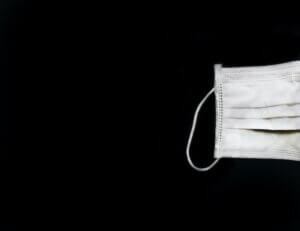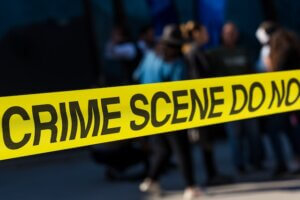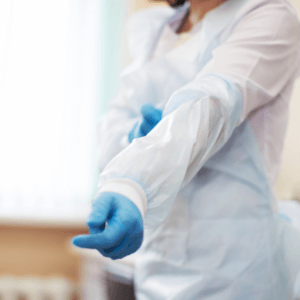Step By Step Guide to Forensic Cleaning Procedures
Step-by-Step Guide to Forensic Cleaning Procedures
Summary
The article titled “Step-by-Step Guide to Forensic Cleaning Procedures” provides a thorough overview of the meticulous process involved in forensic cleaning, emphasising the importance of precision and safety. Presented by AllAces Cleaning & Restoration, it covers key steps from initial assessment and biohazard removal to cleaning, deodorisation, and restoration. The article also addresses frequently asked questions about forensic cleaners and highlights the company’s expertise in the field, offering services in various locations in Australia.
In the world of forensic cleaning, precision and thoroughness are of utmost importance. Cleaning and restoring a space after a traumatic event or crime scene requires a meticulous approach to ensure not only the physical cleanliness but also the emotional well-being of those affected. At AllAces Cleaning & Restoration, we understand the gravity of our work and the impact it has on individuals and communities. In this comprehensive guide, we will walk you through the step-by-step procedures of forensic cleaning to provide an in-depth understanding of this vital service.
Steps Involved in Forensic Cleaning
Initial Assessment
Before commencing any cleaning activities, a thorough initial assessment of the scene is paramount. Our team of experienced forensic cleaning specialists arrives at the location equipped with the necessary protective gear and tools. During this phase, we carefully evaluate the extent of contamination and damage, identify potential hazards, and assess the work scope required.
Safety First
Safety is our top priority throughout the entire forensic cleaning process. Our specialists meticulously follow safety protocols to protect themselves and prevent any cross-contamination. This includes wearing personal protective equipment (PPE), such as gloves, masks, and hazmat suits, to minimise exposure to biohazards and pathogens.
Containment and Isolation
To prevent the spread of contaminants, we establish a containment area using plastic sheeting and barricades, when required. This containment zone ensures that the affected area is isolated from the rest of the property, minimising the risk of cross-contamination.
Removal of Biohazardous Materials
The next critical step involves the safe and thorough removal of biohazardous materials. Blood, bodily fluids, and other potentially infectious substances are carefully collected, packaged, and disposed of in compliance with local regulations and industry standards.
Cleaning and Disinfection
Once all biohazardous materials have been removed, our team initiates the cleaning and disinfection process. We use hospital-grade disinfectants and specialised cleaning agents to thoroughly sanitise and decontaminate every surface within the affected area.
Deodorisation
Eliminating unpleasant odours is an integral part of forensic cleaning. Our experts employ advanced deodorisation techniques to ensure that no lingering odours remain, creating a clean and habitable environment.
Restoration
After the cleaning and decontamination process, we proceed with the restoration phase. This involves removing any damaged structures, materials, or items within the space, and restoring it to its pre-loss condition.
Final Inspection
Quality control is vital in forensic cleaning. Our team conducts a meticulous final inspection to ensure that every aspect of the cleaning and restoration process meets our stringent standards. We leave no stone unturned, guaranteeing that the space is safe and clean.
Documentation
Documentation is a critical aspect of forensic cleaning. Upon request, we provide detailed reports and documentation of our procedures, including photographs and scope of work, for our clients and regulatory authorities as needed.
Forensic cleaning is a specialised and essential service that requires precision, expertise, and compassion. At AllAces, we are committed to providing top-tier forensic cleaning services, ensuring that affected spaces are not only physically clean but also emotionally restored.
FAQs
What is a forensic cleaner?
A forensic cleaner is a trained professional responsible for cleaning and decontaminating spaces after traumatic events, crimes, accidents, or biohazard incidents. Their role is to restore the affected area to a safe and habitable condition.
What types of situations do forensic cleaners handle?
Forensic cleaners are called upon to address various situations, including crime scene cleanup, unattended deaths, hoarding cleanup, industrial accidents, and biohazard remediation. They are equipped to handle environments contaminated with blood, bodily fluids, pathogens, and other hazardous materials.
Why is hiring a forensic cleaner important?
Hiring a forensic cleaner is crucial because they have the expertise, equipment, and training to safely and thoroughly clean and disinfect spaces contaminated by biohazards. Their services not only ensure the physical cleanliness of the area but also help alleviate the emotional burden on individuals and families affected by such events.
Why Choose AllAces?
AllAces Cleaning & Restoration has more than 35 years of industry experience handling extensive forensic and trauma cleaning jobs across Brisbane, Sydney, Melbourne, and surrounds. Our IICRC-certified technicians are highly trained and experienced, utilising the latest technology and equipment to ensure the return of a safe and habitable space.



